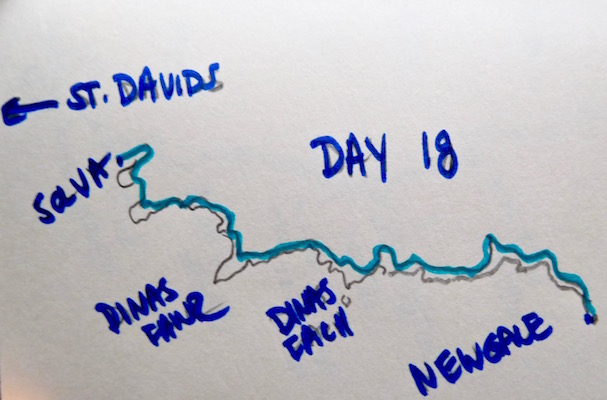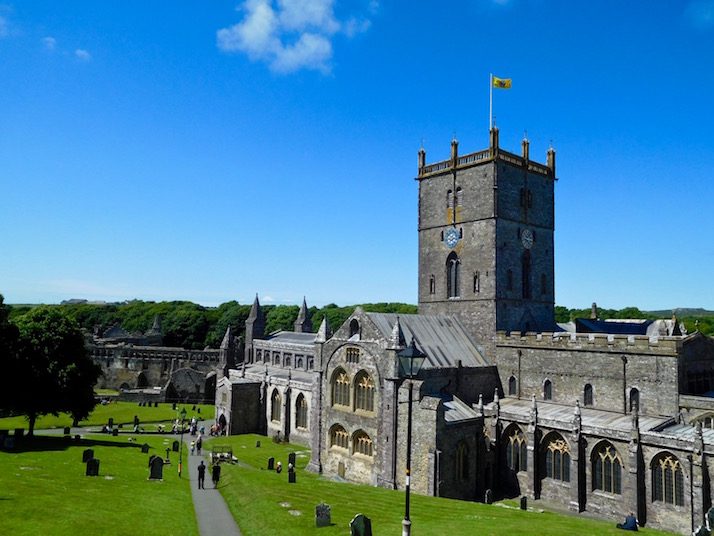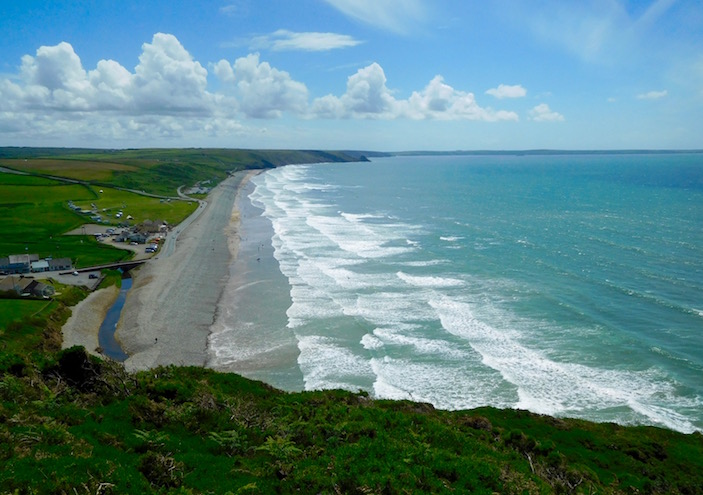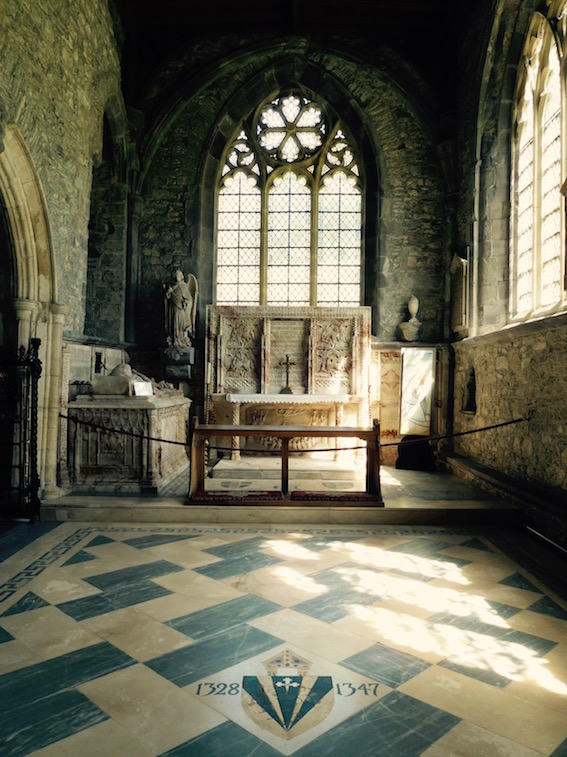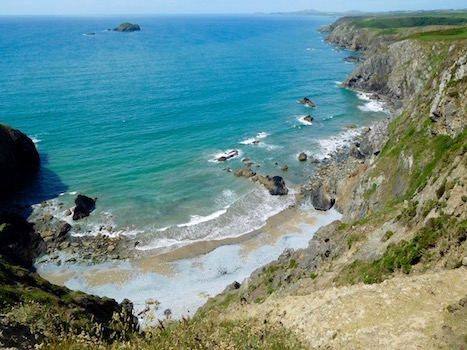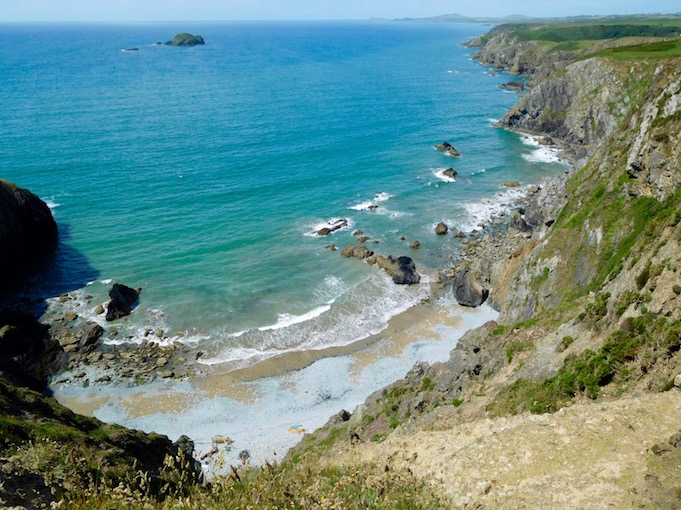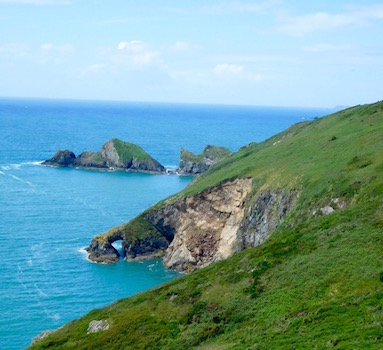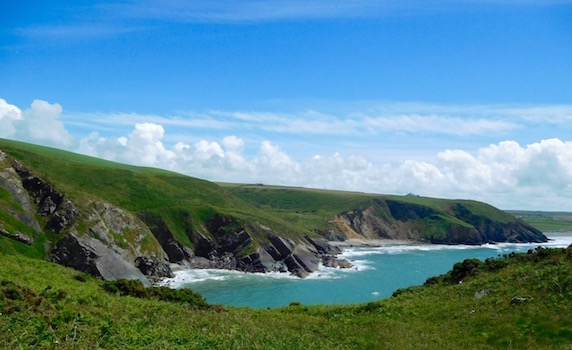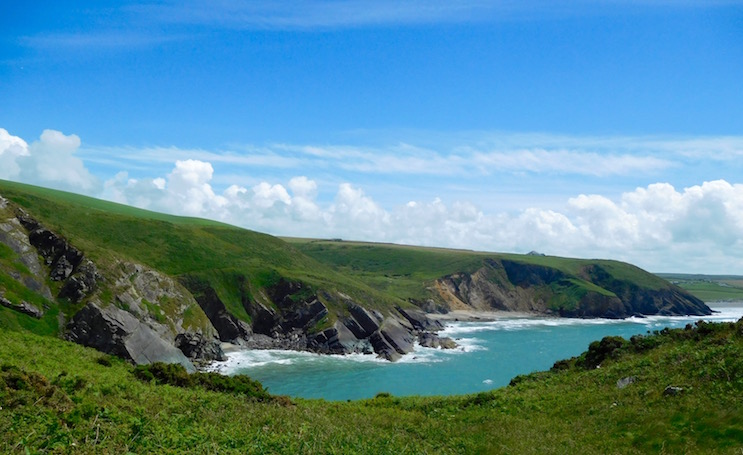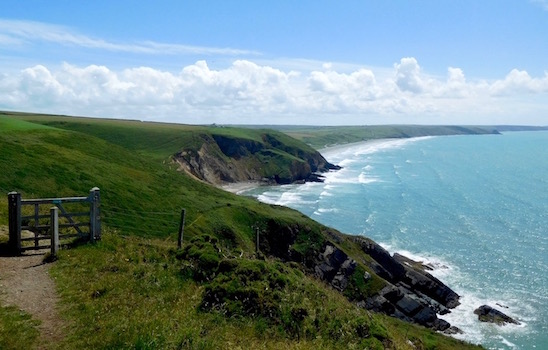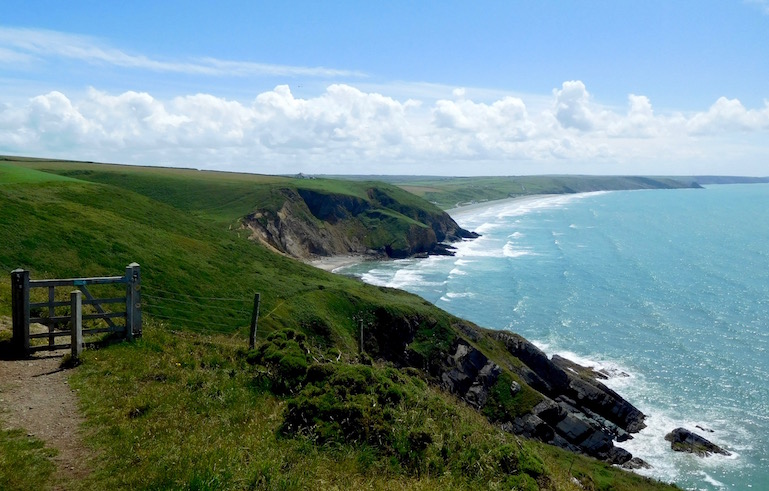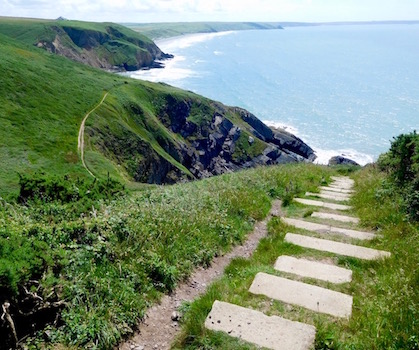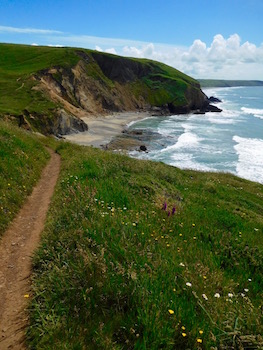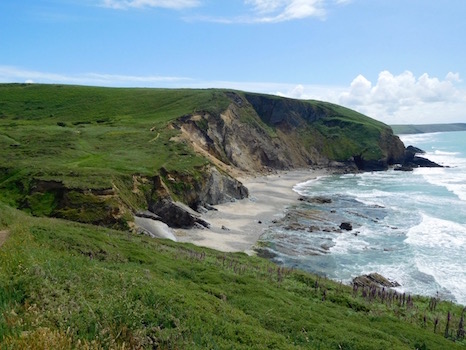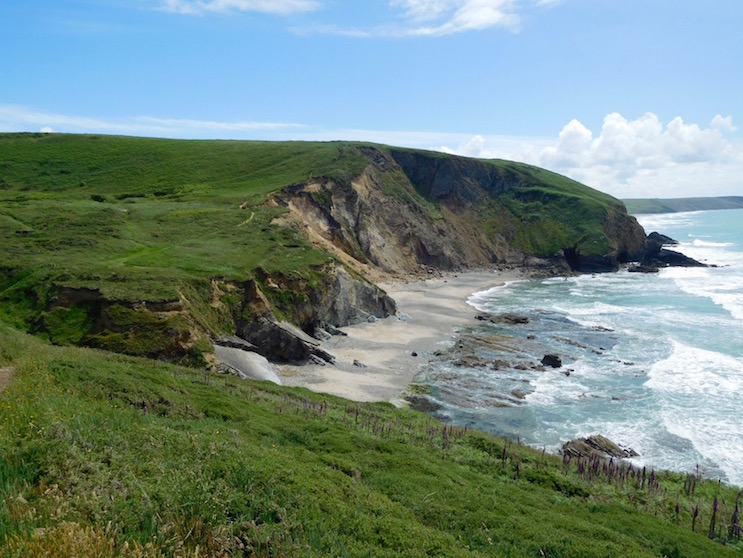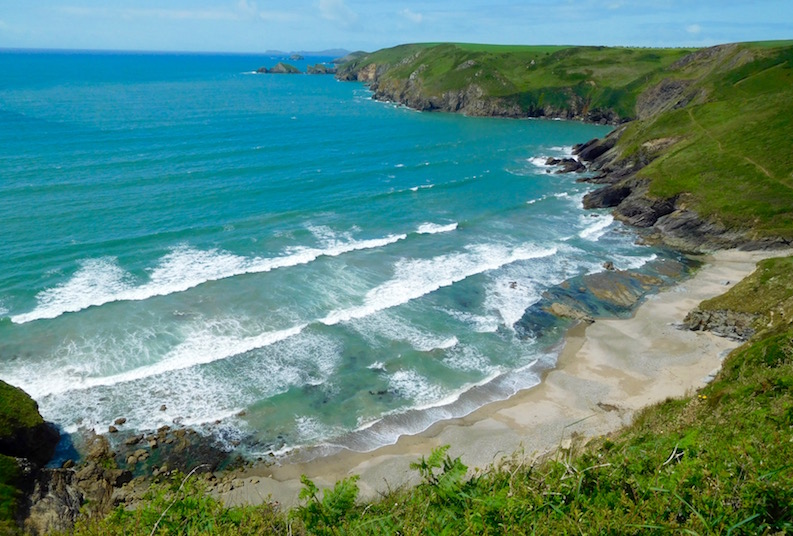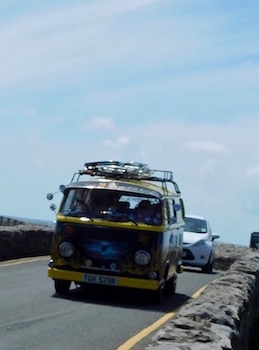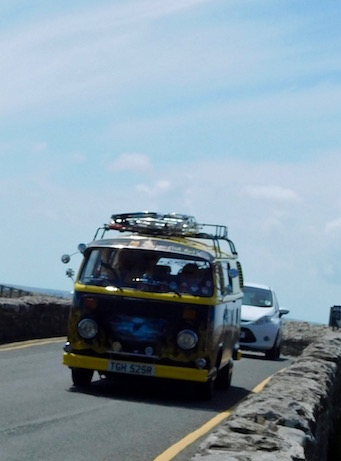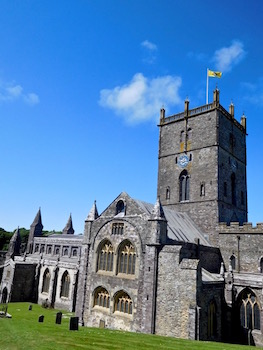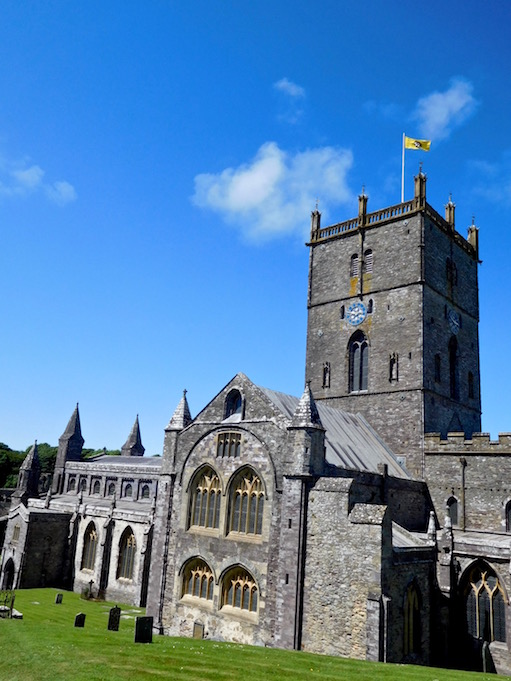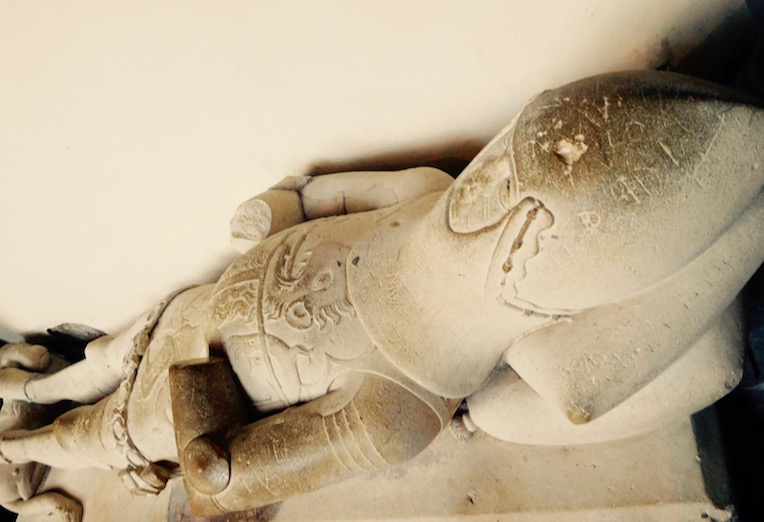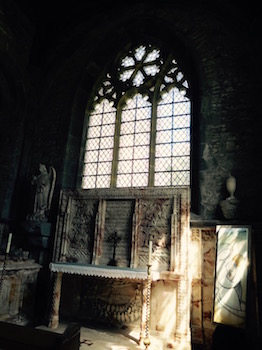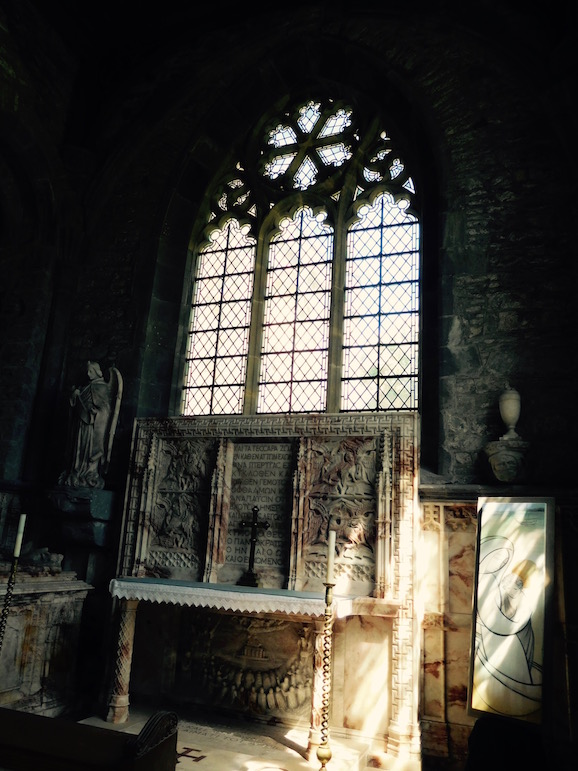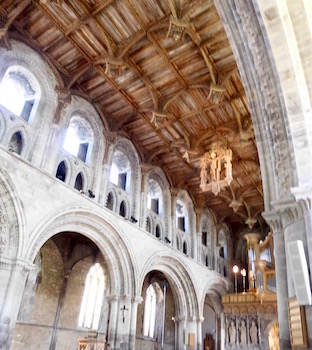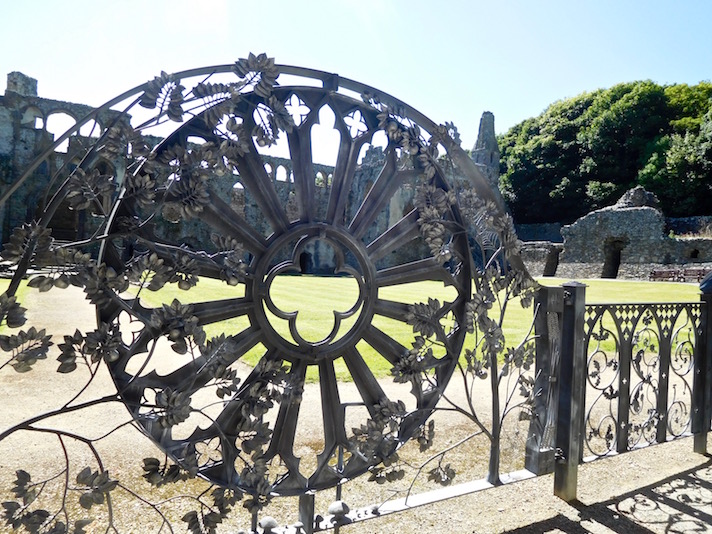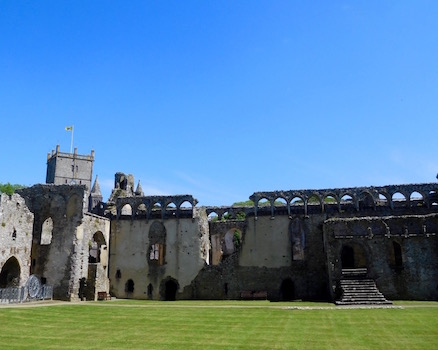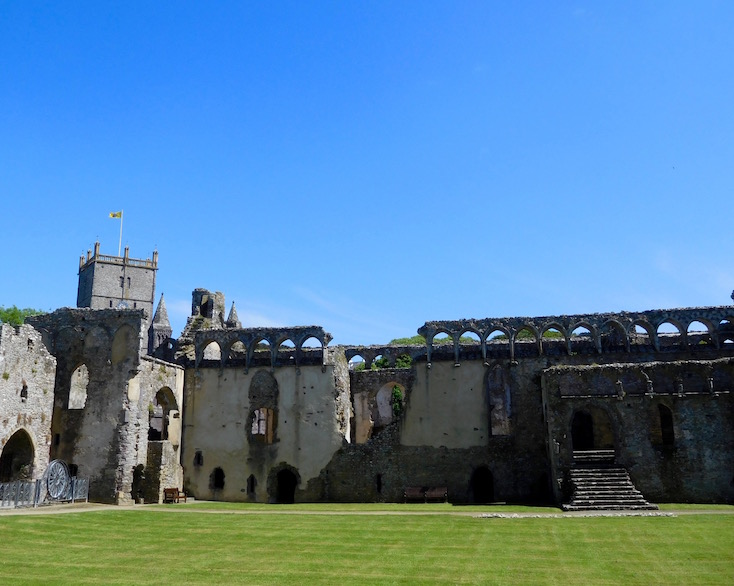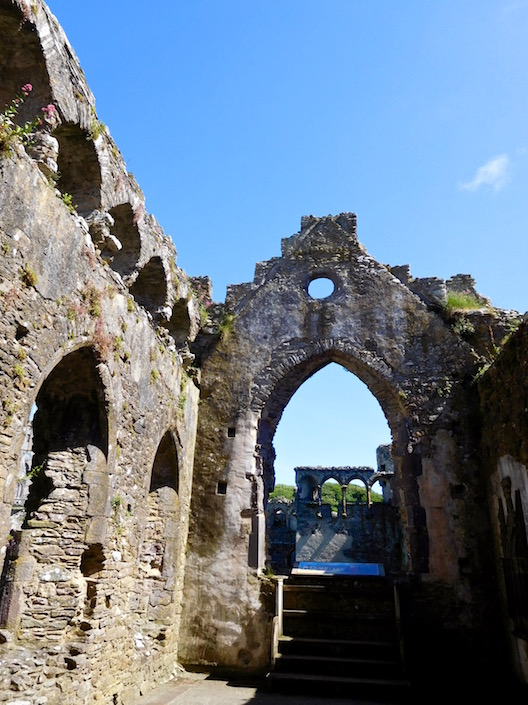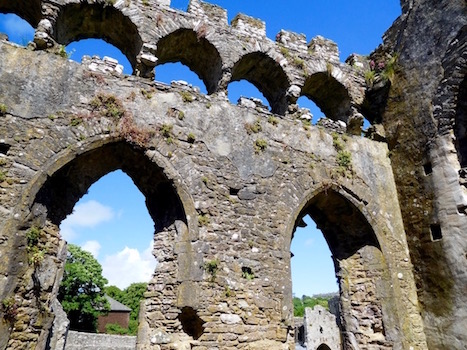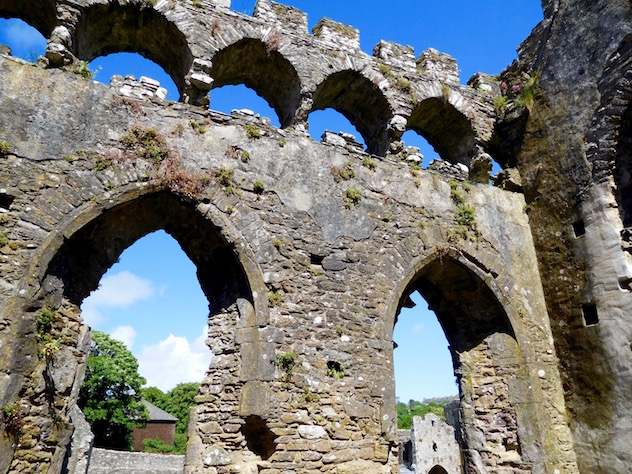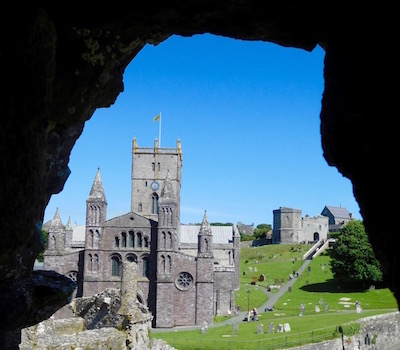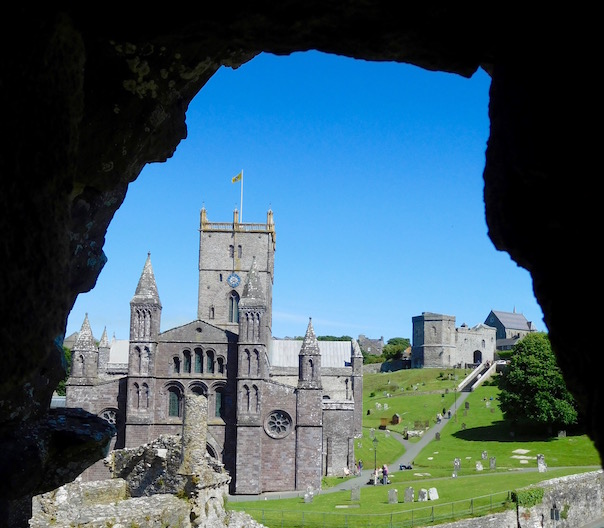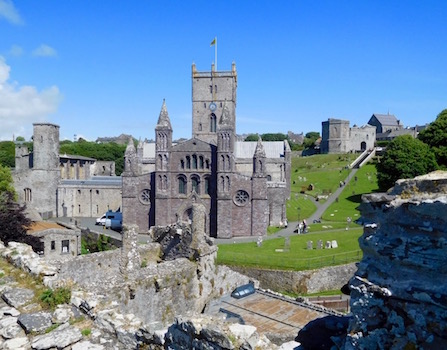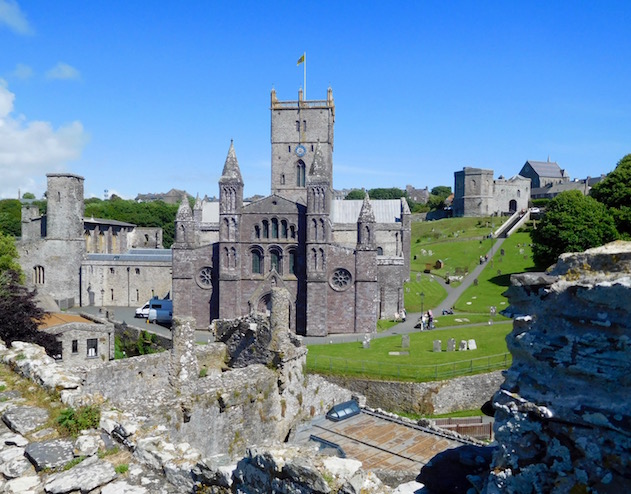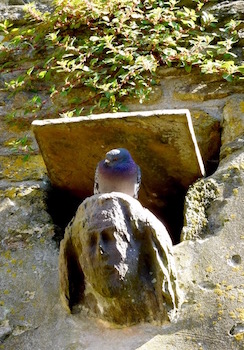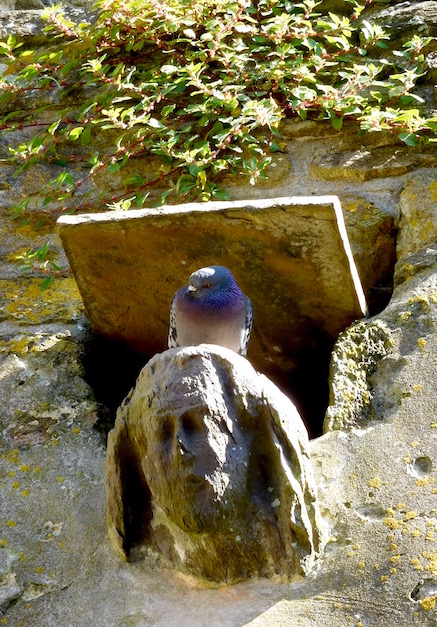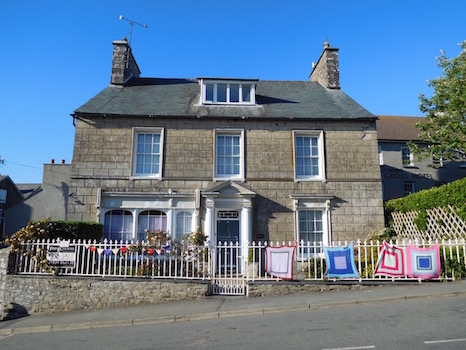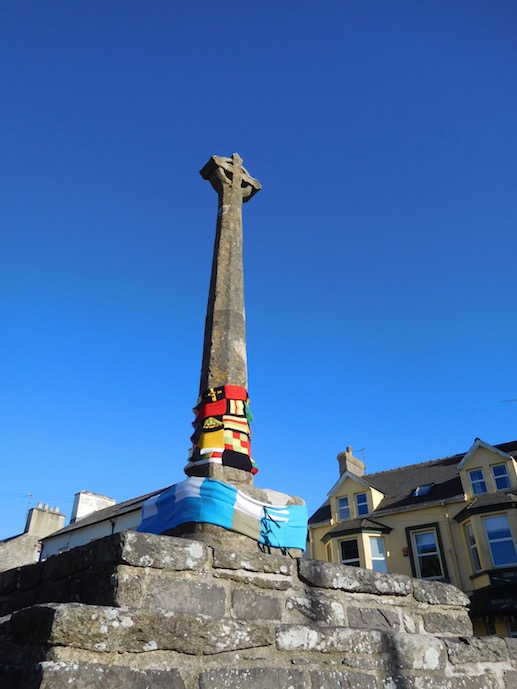Day 18
Solva to Newgale: 4.5 miles (not very far, but I had to get back to St. David's!)
Thank you of the day: The National Orchestra of Wales
Reason: You put on a lovely show - nothing like being in a beach town with a surfing culture that's a cross between Maine and Cape Cod where in the evening I can go to a classic music festival in a 12th century cathedral.
Solva to Newgale
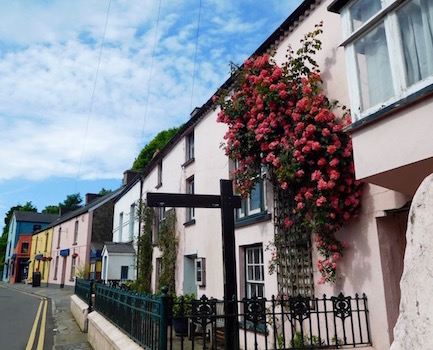
OK, I'm going to be honest - today I had an exceedingly short walk because I had festival tickets for the evening, and the only bus that left at the next point beyond Newgale would have left too late to get me to the show. There of course was some charming scenery, the weather has entirely cleared up, sunny and bright though a bit breezy.
But rather than give the blow-by-blow of how many steps I walked up on my hike today, instead I want to talk about St. David's, where I'm staying this week. Enjoy the pictures of my walk if you'd like to get a sense - basically Newgale has a giant beach - but since I'll be crossing it tomorrow, I'll tell you more about it then.
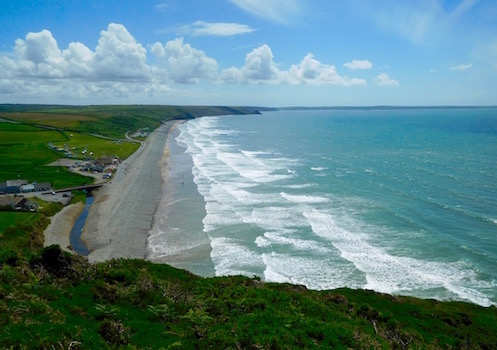
Reverse to St. David's
So, as I've mentioned, I plunked myself down into an AirBnB room in St. David's for the week, as I hiked around the peninsula. The city itself isn't on the water - though on clear days you have beautiful views to the water including Ramsey Island. But the peninsula basically curves around it, and as the westernmost village in Wales and it's location in the national park, there are transport links to every stop on the coast path via a series of regular and tourist buses. So rather than slog my things from village to village, I decided to stay in the center and work my way around.
But possibly more to the point, I've really wanted to spend time in St. David's for a while. It's just far enough south from Aberdyfi as to make it an inconvenient visit - but I'd read about the 'Celtic wilderness' style of scenery, the surfing spots, the beaches, the activities, the beauty of the coast path, and the quaint story that it's the smallest cathedral city in Britain - and potentially the world - with less than 2000 inhabitants.

And that brings me to the other point - the cathedral. It was here that in the 6th century St. David founded a monastery, and work began on the cathedral in 1181 after he'd been canonized. Incidentally - he's the only native born patron saint of any the patron saints of Wales, England, Ireland or Scotland. Anyway, the cathedral was built here, and the town grew up around it.
I'd seen it described as breathtaking - in fact I thought at least one of the guidebooks I read sounded actively hysterical about how amazing it was - but it really didn't prepare me for the giant gothic cathedral, close to the size of the entire city, gorgeously tucked away in a valley. Placed in the valley for safety (from Vikings), this means if you visit from the town, you're really viewing the cathedral from above or at the same level - which is an odd perspective for buildings that are supposed to tower over you.
After my days walk today, I went down to actually walk around - in the brilliant sun the tower seemed to glow purple and silver, since the building is made from various local stones in a few different colors. The tower itself has clocks on three sides - apparently those living in the north part of town couldn't afford to pay for a clock facing in their direction. So I walked down the 39 steps (for the 39 tenets of Anglicanism) and made my way inside.
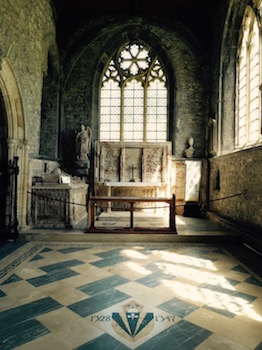
The building is really, really lovely - not as large as many major cathedrals, but it seems to just fit perfectly with the more rural feel of the countryside. Inside, the roof is intricately worked Irish oak from the 16th century, and there are thousand year old tombs all around. These include the 12th century Welsh prince Rhys ap Gruffudd who ruled the Welsh kingdom of Deheubarth and held the first Eisteddfod in Cardigan castle, and Gerald Cambriensis, 12th century author who chronicled Welsh life in 'A Journey Through Wales' and 'A Description of Wales.' Their tombs have stone carvings of them on top of them - making it feel very Indiana Jones under a church in Venice-like (though there were no rats and nothing was lit on fire trying to protect the Holy Grail - which of course is currently in the Welsh National Library in Aberystwyth by the way).
Also here are Edmund Tutor, father of King Henry the VII, and of course St. David himself. I say 'of course' - but then I would be ignoring the 16th and 17th centuries - otherwise known as the time when King Henry the VIII broke from the Roman Catholic Church and created a Church of England and Wales, when Oliver Cromwell destroyed all the cathedral's Catholic treasures, and when the fiercely Protestant Bishop Barlow threw St. David's remains out of the church. The latter were only found again during a 19th century restoration.
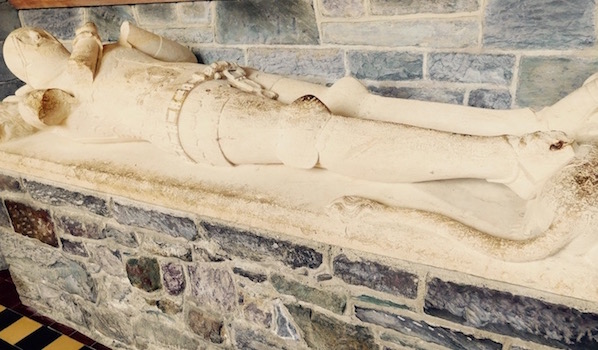
In the church's Treasury, there's a timeline that does mention that many of the treasures of the time were lost to Cromwell's soldiers - but beyond that, there's not much discussion of the church's Catholic roots, the Civil War, etc. And certainly no statements like I found on the walls of Nevern 'to accommodate Henry VIII the Church of England is founded. No one likes it and Catholic practices continue clandestinely.' There's also a mention of St. David's having a Norman Marcher lord here, but similarly no background as to what this means in terms of Welsh history. Interesting - in north Wales there always seems to be more historic explanations.
In any case, in the Treasury you can find a few remaining Bishropic treasures - the curlycue top to the bishop's staff, carvings and ancient vestments. You can see ancient choir screens and giant pillars that seem to bow out due to a 13th century earthquake. You can even visit the only cathedral stall with the royal coat of arms on it - the monarch is automatically a member of the Cathedral's Chapter. But mostly I just wandered around in a daze, noting just how charming the whole place was.

After being asked 'where are you from' slowly, by a docent who went out of his way to find me across a crowded room; and who when I said 'The U.S., why?', 'Oh, just interested, no reason' - and realizing I must be looking quite tan these days, what with this guy and the lady who started speaking to me about something, then stopped, and slowly said 'Do... you... understand... en...' 'Umm, yes, I just don't know what you're asking me' - anyway, after that I decided to go to the ruins of the Bishop's palace next door.
This is a CADW (Welsh heritage) site, which you have to pay for (unless of course, you're a CADW member). It was much less busy than the cathedral, and much more charmingly ruinous. This was, as you can guess, a palace built for the Bishop in the 14th century. Several stories high around a central courtyard, the ruins are pretty extensive. Apparently the palace only lasted two hundred years however, when in the 16th century the local bishop had 6 daughters, and had to strip the roof of all its lead in order to pay their marriage dowries. Ah, selling women off used to be so expensive, how charming.
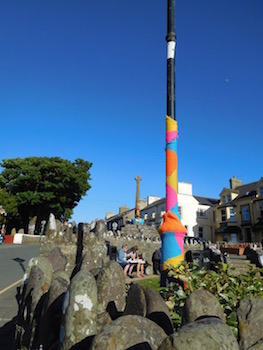
I wandered up spiral staircases that must have been made for children's feet, into small chapels with impressive rows of arches, and even made it into a charming private latrine. Those bishops really had it good.
In any case, this is St. David's - land of hipster wood fired pizza, surfing, coasteering, nature cruises to Ramsey Island, and the most atmospheric cathedral I've ever been to - especially when I revisited in the evening for the St. David's Classical Music Festival, and the charmingness was set to the music of the National Orchestra of Wales.
Did I mention I was close to the youngest person in the room? Well then there was that too.

